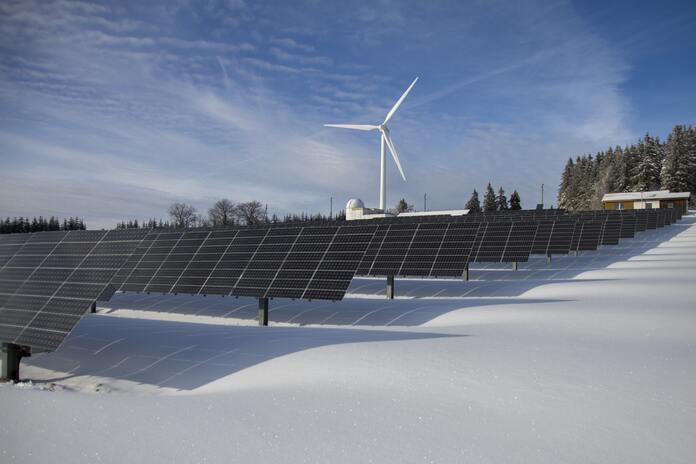The solar-to-hydrogen conversion company Fusion Fuel (NASDAQ:HTOO) will ramp up production just as Europe appears to be at a turning point in terms of its energy future. Despite how dangerous a plan it may turn out to be, there is no longer much doubt that the EU will go all-in on the post-hydrocarbon energy transition. There have already been significant subsidies granted to Fusion Fuel, and considerably more are on the way. Yet, a recent EU decision might result in a lessened emphasis on the necessity of converting wind or solar power into hydrogen. France pushed for nuclear to hydrogen conversion, and it was granted a carve-out where it is equated to green. As a result, Fusion Fuel is anticipated to experience a slight decline in interest in its success, and the long-term pricing power of green hydrogen is likely to be weakened by competition from hydrogen produced using nuclear power. As a result, I am changing my stance on the HTOO stock from a Strong Buy to a Hold.
Fusion Fuel still needs to demonstrate its viability as a solar-to-hydrogen producer, but it is getting there thanks to the sizable government grants that are enabling it to move forward with its plans without having to heavily rely on stock dilution or incur debt to pay for the project’s initial costs.
Regarding Fusion Fuel’s financial performance, there isn’t presently anything of note that investors can get their teeth into. It is currently in the pre-production phase. In need of formal commissioning, the H2Evora project is ready to start. 15 Hevo-Solar generators with hydrogen storage are used in this small-scale trial project, together with a Ballard fuel cell to turn the hydrogen into power that can be sent into the grid. Each unit has the potential to create up to a tonne of hydrogen annually in the best-case scenario. We will only be able to draw some general conclusions after we start to see some tangible project results. Even if it is only on a very modest scale, it is always encouraging to see a firm making some progress toward generating actual income.
The H2 HEVO-Sines Project will have a much bigger impact on the company’s future as a whole. According to estimates, it will cost 147 million euros and produce approximately 9,000 tonnes of green hydrogen yearly. We’ll have to wait and see how long it takes for such a massive undertaking to be fully finished. The target year is 2026, according to Fusion Fuel’s research on the larger Sines initiative, which incorporates a few other businesses. A couple of additional smaller-scale ventures are scheduled to launch before that.
As I’ve already mentioned, the ongoing influx of government funds is excellent for maintaining investors’ share prices. Fusion Fuel didn’t have to issue a lot of shares. The number of shares outstanding for the third quarter increased by nearly 300,000, reaching 13.42 million. Although it is a sizable increase, it is not quite as abrupt as what we frequently observe with businesses that have not yet had substantial inflows of income. Fusion Fuel’s chances of survival and profitability in the future are improved as long as it doesn’t incur significant debt because it won’t be overburdened by debt-servicing expenses, as is sometimes the case with startups.
Future prospects for Fusion Fuel are made more questionable by the EU’s compromise on nuclear hydrogen.
It is evident from the EU’s current energy mix that nuclear hydrogen will not take over in terms of future hydrogen volumes. This is especially true when placed in the context of the EU’s green energy plan, which among other things calls for a roughly 10 million-tonne green hydrogen production capacity by 2030. When utilities are forced to reduce the quantity of natural gas they use, there doesn’t seem to be much spare nuclear-generating capacity.
The EU’s ultimate goal is to have 20% of its electricity generated by green hydrogen by 2050. According to current nuclear power investment plans and decommissioning schedules for the remainder of the decade, it doesn’t appear like the EU’s nuclear power output capacity will alter all that much. A few projects are slated to increase capacity, but a few reactors are slated for decommissioning this decade as well.
Given its enormous nuclear power capacity and the ability to use some of the power for hydrogen production, the French government advocated for the approval of nuclear hydrogen. How big of an effect it will have on Europe’s supply of green hydrogen is unknown. Hungary has the potential to make the biggest influence on the European green hydrogen industry thanks to its nuclear hydrogen supplies. Hungary is now constructing two new reactors at its Paks nuclear site, and if the previous reactors are kept operational as well, it could have a large amount of extra nuclear power capacity that it could use to produce a sizable amount of hydrogen. It doesn’t seem like there are many other nations or businesses looking to manufacture substantial amounts of hydrogen from nuclear power, other than France and Hungary.
Bottom Line
It seems doubtful that nuclear power-derived hydrogen will make up more than 10% to 20% of all green hydrogen supply in the EU, given the energy loss problems associated with converting electrical energy to hydrogen and the likelihood that Europe’s nuclear power output won’t increase in the future. Simply put, the EU does not have enough nuclear power capacity to sustainably manufacture more hydrogen. There will be additional nuclear hydrogen produced only in the improbable event that nuclear power adoption suddenly surges in the EU. The remaining energy will primarily come from electrolyzing solar or wind energy to create hydrogen.
Nuclear hydrogen is expected to have an effect on the entire EU energy market, even if it plays a modest role in the future green hydrogen supply chain because it can change market prices. It might be the first to respond to rising costs with additional supplies if it is less expensive to generate than hydrogen obtained from solar or wind power, which might put some pressure on future profit margins for green hydrogen producers like Fusion Fuel. Its prospects for future profitability could be negatively impacted by this EU ruling. In other words, the likelihood that investing in this firm will pay off has decreased, given a worsening possible risk versus potential reward scenario, which is why I am downgrading Fusion Fuel from a Strong Buy to a Hold rating. Once it starts to demonstrate any real operational success, it might merit an upgrade back to buy. I personally have no plans to expand my exposure to Fusion Fuel stock until then and will continue to keep my current stake.
Featured Image: Pexels @ Pixabay









